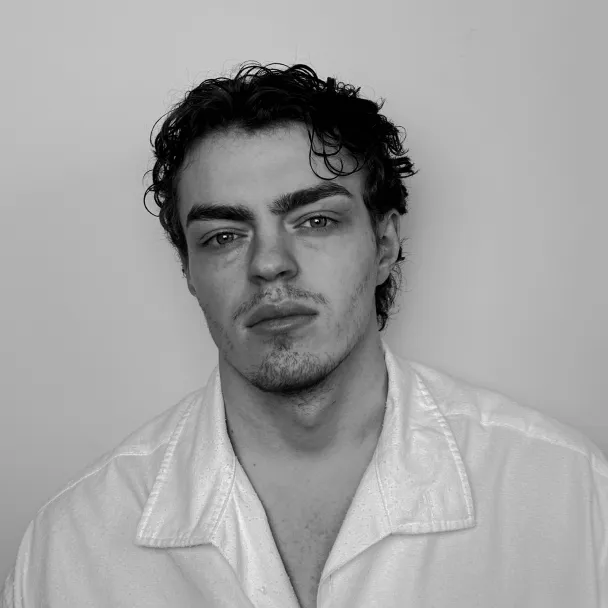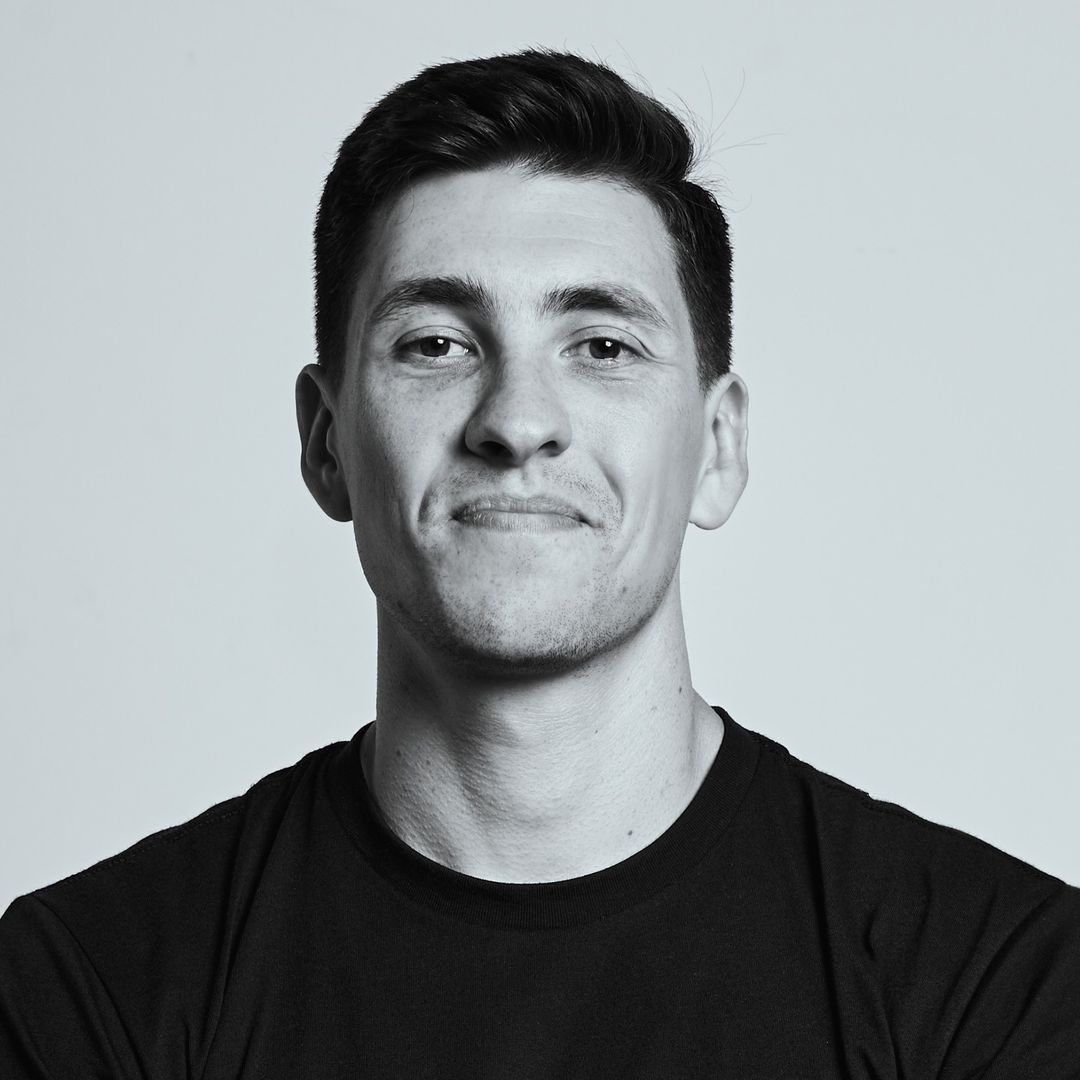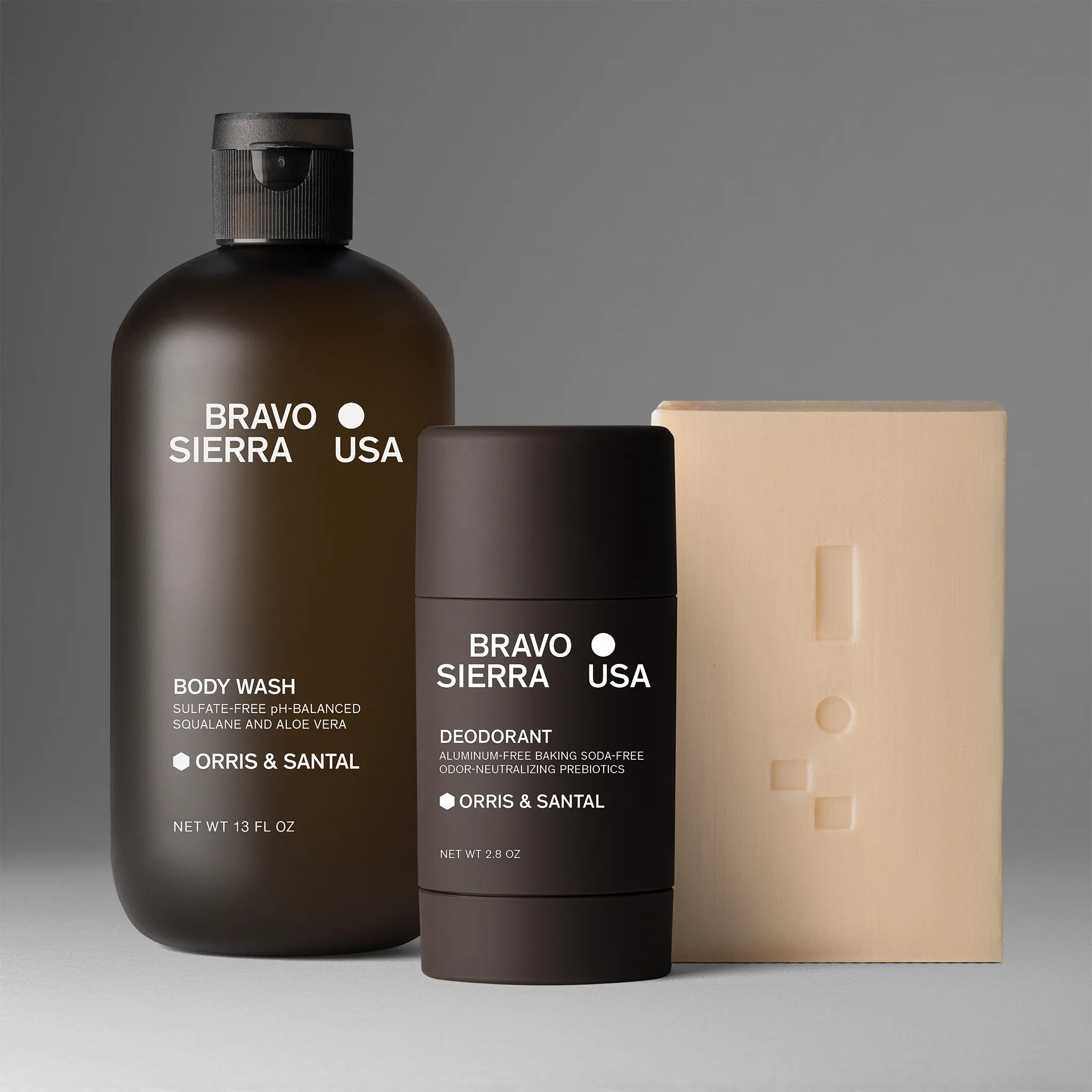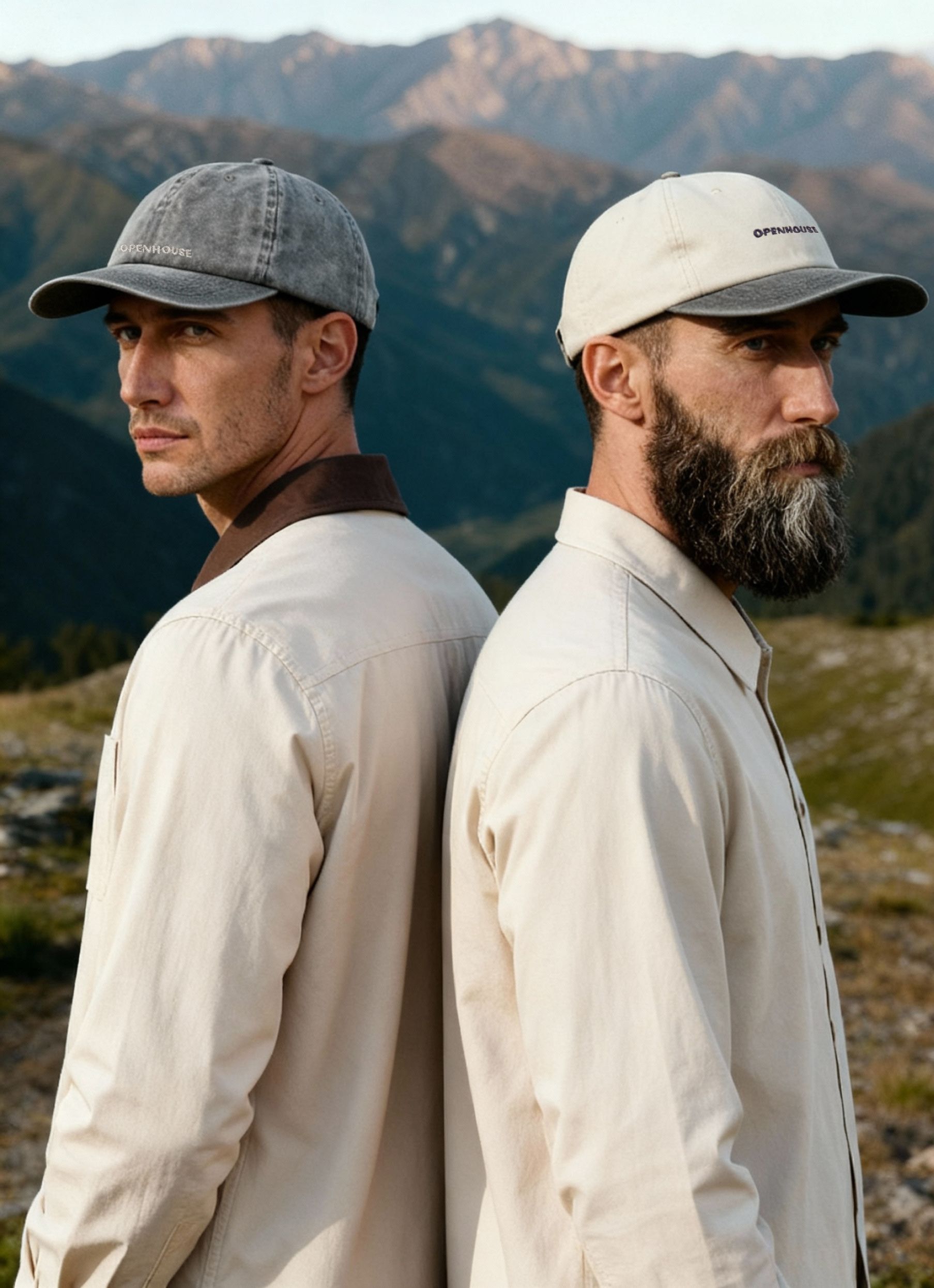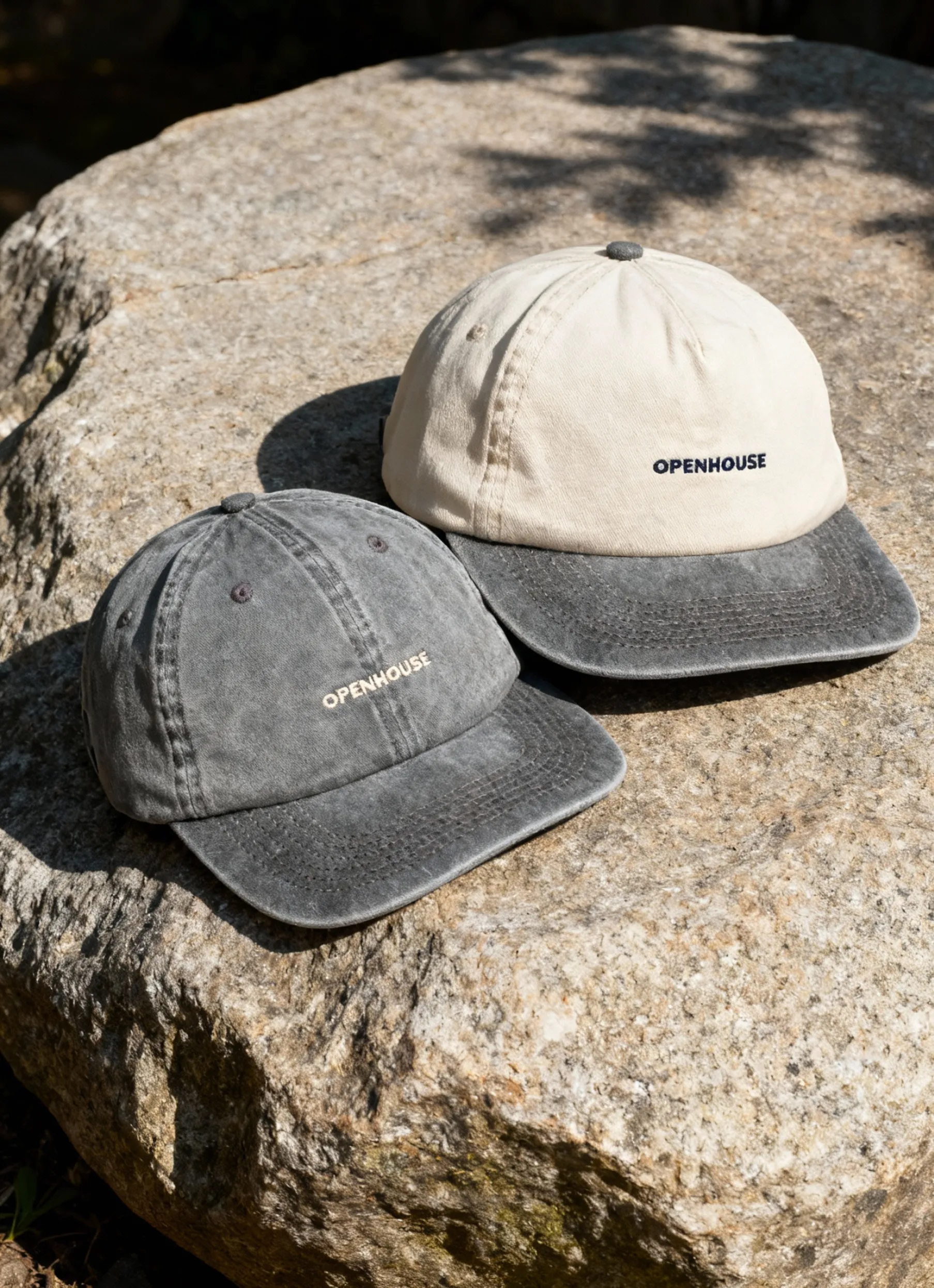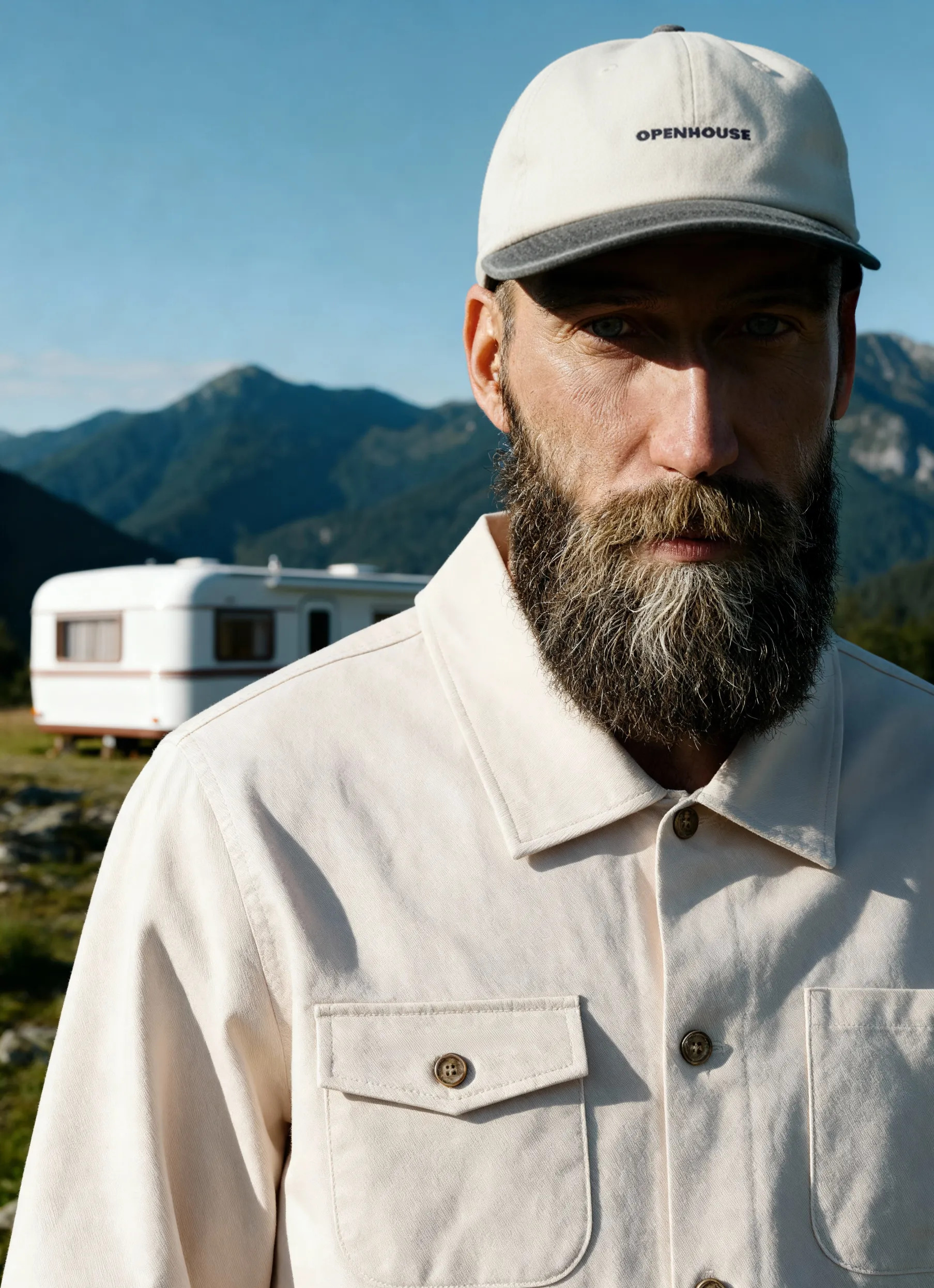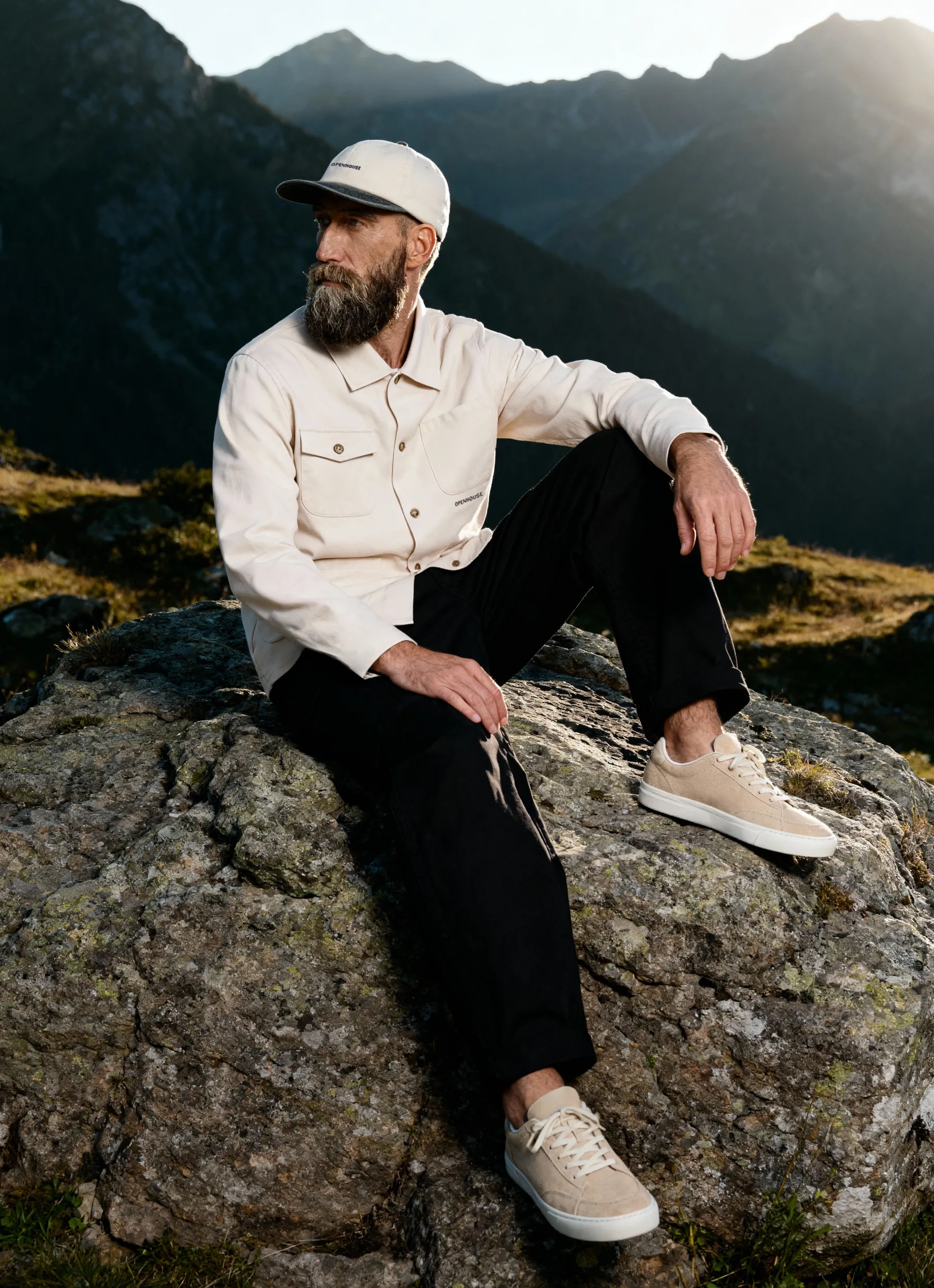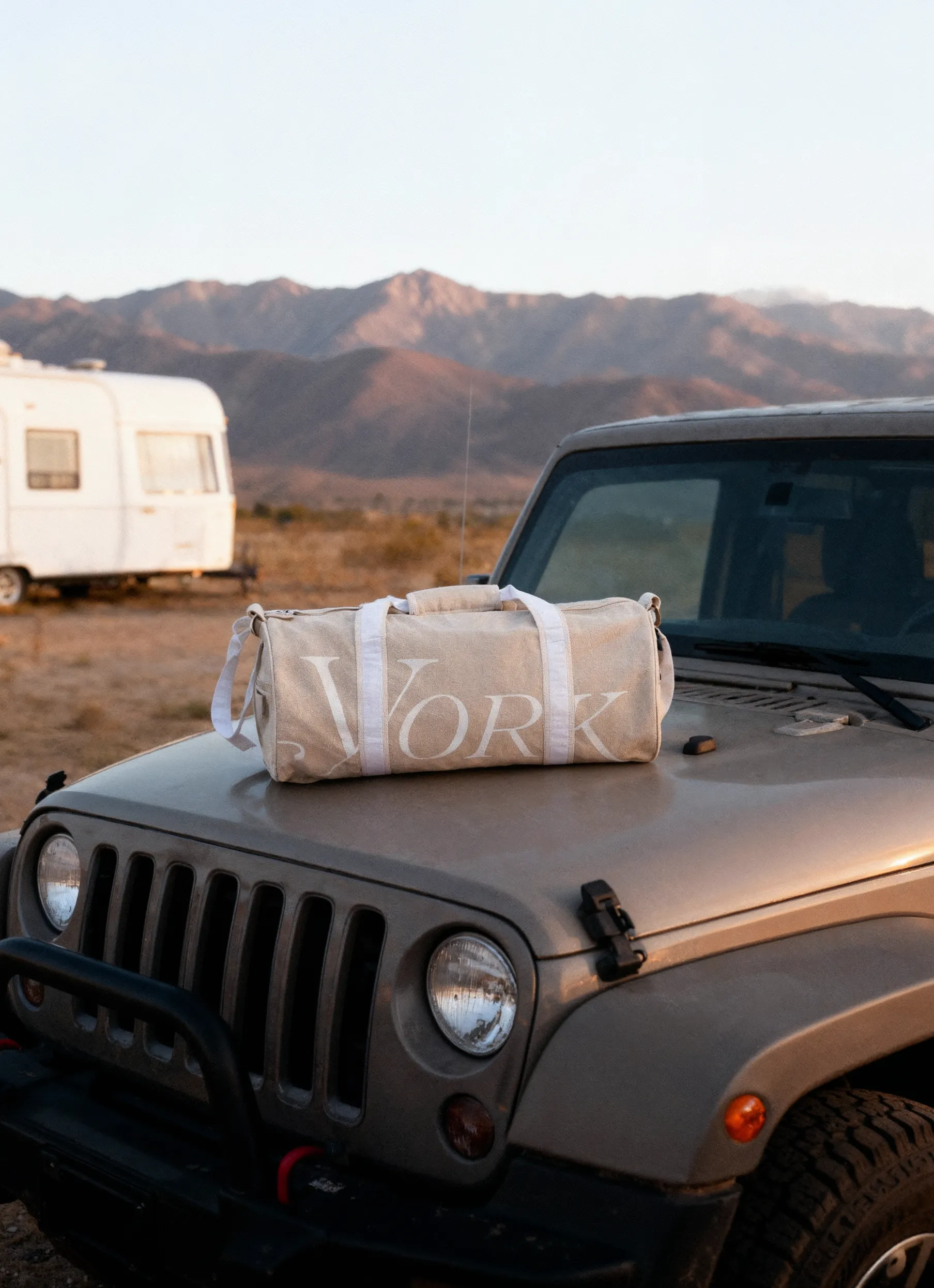We asked our co-founder and Chief Quality Officer, Dimitry, to provide some insider clues. Kind as he is, he gladly shared with us his years of experience in professional product photography. So please, meet Mitya!

Dimitry has over 13 years of experience in the field of professional photography and editing. A perfectionist by heart, he values when the work is done perfectly, so every single shot made by Squareshot is double-checked by him. He loves talking about photo editing and enjoys Guinness. That's how we tricked him into helping us.
This step-by-step guide on how to photograph clothing for online stores is good for beginners as well as seasoned marketers, art directors as well as ecommerce store owners. If you are a bit of a control freak, a perfectionist, a pedant, or just want to make sure your first photoshoot yields the best results and improves your site’s conversions – this is an article for you.
What Is Clothing Photography?
Clothing photography is a branch of PRODUCT PHOTOGRAPHY that specializes in producing high-quality commercial images of apparel, shoewear, lingerie, and accessories to promote and sell these items online or offline.
Apparel photography has a slightly narrower meaning and does not usually include the production of shots of footwear and accessories. While it sounds very close in meaning, a photo studio specializing in taking pictures of apparel only, may not have proper equipment for 360-degree images, or proper stands and props for positioning accessories.
Fashion photography, on the other hand, is wider in its semantics, and embraces the endless creative spectrum of all kinds of techniques, and types of shootings, where the object of the photo session can be as evasive and ephemeral as the brand spirit of a Haute couture collection, or a fashion brand. The most frequent culprits under the strobe lights in this case are still clothes, accessories, lingerie, and shoes, but can also be perfumes, jewelry, and cosmetics.
A professional photographer uses a number of know-how techniques to best portray an object in the shooting process. When thinking how to photograph clothes best, an expert needs to account for a multitude of variables and constants. An ample range of factors play into the quality of the outcome, no detail is too small: lighting, angle, depth of field, focus, background, and composition are just a few of them. All balanced professionally, they create a seamless shopping experience for customers and a solid digital brand image.
Why Photography Increases Conversions
Great images impact sales in many ways, below are some of the reasons why clothing product photography positively impacts website conversion:
- Google likes original content. Always make sure to use the original images in high resolution with thought-through descriptions and alt tags. This is a simple recipe for high Google rankings. By optimizing your images, you may get much closer to the top positions in Google image search. The Intent Lab states:
- 85%+ of the respondents, while shopping for clothing, value visuals as more important than texts.
- 36% of respondents use visual search.
- 59% agreed, that visual information is more important than contextual. - The more time a client spends on product images, the higher the “time on page” parameter goes up, signaling just how engaging your resource is. This ultimately trickles down to boost your other KPIs across SEM and SEO, as Google has a lot of respect for a user and the algorithm holds page rank in high esteem. Other things being equal, a page with higher time on page will enjoy lower CPC and higher SERP results.
- The more accurate your imagery reflects your products – the less your return rate is. Ecommerce businesses face anything from 20 to 30% return rates which costs them $165 million on every $1 billion in sales, according to NRF. This is why the skill of knowing how to photograph clothing realistically is in high demand in the industry.
- The more real-life feel you infuse into imagery, providing shots in a lifestyle context – the higher the probability is that the target audience will resonate with the product and will buy it.
- In a nutshell – poor product photography is a commodity no apparel store owner can afford.
How Can Professional Apparel Photography Impact Your Sales?
If you look at MAJOR E-COMMERCE KPIS, all of them can be improved by providing high-quality imagery to the products on sale in your online store:
- Dwell time (the combination of “Time of Page” and “Bounce Rate”)
- CTR
- Ranking by keyword in major engines (including visual search)
- Duplicate titles and descriptions
- Users on site
- Average order value
- Customer Lifetime Value (LTV)
- The shopping cart abandonment rate
- Percentage of returning customers
While there is no one-size-fits-all solution for every clothing online store out there, generally speaking, a professional approach to PRODUCT PHOTOGRAPHY is both: an expected foundation and the point of differentiation in this industry.
Moreover, if your vendor knows how to take pictures of clothes to sell this will not only help grow your business but will also prevent stagnation and rapid deterioration. As a user, you may not even register, how you instinctively quickly bounce off any webpage with blurry, inconsistent, poorly-lit, low-resolution clothes photography. In the era of Instagram, Midjourney, and AI general public has very high standards of esthetics due to continuous mass exposure to high-quality visuals.
E-commerce Requirements for Clothing Photos
For the clothing photoshoot to be a successful one, some basic requirements should be adhered to:
1. Proper lightning: too much light or too little light will both make the image unappealing or looking unprofessional.
2. Well-prepped presentable condition of the item: way too often we have seen a creased skirt on a model – however basic it may sound – the clothing must look brand new and be well-ironed. If you don't have enough staff to do that yet, just use a photostudio with additional services – at Squareshot we can iron or steam your apparel to save your time on prepping:)
3. Right quantity: there is no golden rule really, but having just one or 2 images representing a 1000-dollar nightgown is likely to be seen as an insult to a buyer.
On the other end of the spectrum – images should not be repetitive and spammy – having over 12 pics per item may defeat its purpose and confuse the customer. Perfect situation: 4-7 shots per item to notice all details and not get overwhelmed.
– Mitya, co-Founder and Chief Quality Officer at Squareshot
4. Proper angles: you want to make sure you have covered every nuance and detail, that fashion designers worked so hard to create. Exhibit every meaningful angle of the item on sale but, again, make sure not to overdo it.
5. Consistency: while every item is unique – many of them are sold in the frames of the same e-commerce store. Having them produced, shot, retouched in a consistent manner bring about the sense of credibility, stability, professionalism.
6. Storytelling: integrate the target audience’s stylistics as much as possible – be it in the form of a model or by combining few items in a shoot or by providing a certain background to the image. Telling a story through clothes photography is not only possible but highly advisable to mold a point of differentiation in the customer’s eyes.
7. High Resolution: at last but not at least. Your imagery should be minimum 1024x1024 pixels to look good and allow enough detail while zooming is used and up to 4472 x 4472 pixels like on Shopify. While the maximum limit is generous, it's recommended to use 2048 x 2048 pixels for square images, as suggested by the e-commerce platform. This resolution strikes a balance between being detailed enough for a good viewing experience and not overly heavy.
Keep in mind that various platforms, including Amazon and Shopify, may have their own specific image size requirements, so it's advisable to check and adhere to their guidelines for optimal display.
An image should be tack sharp. When you zoom in and the see the texture – then it’s shot correctly. Don't undersetimate that: you put enough efforts into designing your apparel, so let your shoppers take a close look and appreciate your work.
– Mitya, co-Founder and Chief Quality Officer at Squareshot
.jpg)
Decide on your goal – that impacts type of photo shoot needed
If the images are going to be very matter-of-factly or full of story, if you need objects in the pristine photo studio environment or in the city with models, if you are envisioning a static shoot or a dynamic session – you need to be able to articulate that to your product photo studio expert. Ideally, you will have a few references to the websites, that you hold in high esteem and think they have done a great job with imagery on their website.
The pricing of your products also should be taken into account if you are contemplating on the nature of the session. Premium segment expects a lot of attention to details and studio shots are a must.
In the case of mass-market products – the clothing online store owners might also wish to zoom in on the details – so that to align clients’ expectations with the quality of the product. The more true-to-life your imagery is, the fewer returns you will face down the funnel.
How to plan a photo shoot for your store
As in every mission, when it comes to photographing clothing, proper preparation is half the battle. The better a photoshoot is organized, the smoother it will go – and the better impact it will have on your sales.
So ideally you would commission the photography to a professional, in which case clothing e-commerce store owners must approach the task of finding the right product photography company with thoroughness and even pedantry.
Make sure, that:
- Clothing product photography studio is well-established – check its Google reviews, Facebook page, and engagement, official website.
- The company has verifiable clients on their portfolio of the level or above of your online store’s level.
- The company has the knowledge, expertise, and know-how to perform this task: a blog on their website, where they share knowledge is a great sign.
- The company is using professional equipment to attain professional results. Asking what kind of camera is going to be used during the shoot is totally legit – moreover it exhibits to a supplier, that the client has sufficient knowledge of the process and will be able to control results.
- The company rents or owns a professional studio with all the lighting gear necessary for the impeccable results.
Once a fashion store owner figures out which photography service vendor to entrust this vital mission, it is paramount to plan ahead – so that to ensure a smooth process and ROI-rich results.
Planning a clothing photography shoot:
- Prepare the list of all the items to be shot by the category and by the order of shooting.
- Prepare all the apparel items and pack them in batches – as per the order of the photo session.
- Scout, contract, and schedule all the models for the photo session
- Find, rent, and buy all the necessary props for the photo session
- Find, contract, and book the company that specializes in clothing product photography services.
Product Photography Process
Ghost Mannequin vs Lay Flat vs Pinned Apparel – what is right for you?
There are 3 major types of e-commerce product photography for clothing: flat lay, ghost mannequin, and pinned / hanging apparel.
Flat Lay photoshoot: is often chosen for male clothing, accessories, and basic wardrobe items, like T-shirts, trousers, socks. They are predictably basic in many cases – so require no extra depth or complexity.
For the flat lay photography, the items are laid out on the surface – be it a table or a floor – and shot from above at a 90-degree angle. This method is used a lot for Instagram, in which case the object may also be positioned in a way to leave space for text and graphic elements.
.jpg)
Flat lay is the best option for clothing with standard tailoring that a customer can easily imagine it on themselves. These could be T-shirts, sweaters, straight jeans or sport pants. Still, you might think about other options for the clothing made of elastic fabric, for apparel with complex tailoring or fit clothes.
– Mitya, co-Founder and Chief Quality Officer at Squareshot
Ghost Mannequin: allows for a 3D image and provides a more true-to-life vision of the piece of apparel. It require some Photoshop work to combine the front and the inner back of the item in one image. Objects are shot from an eye-level and the resulting clothing shots may look more persuasive to a client, as more true-to-life.
Ghost mannequin photography is better for clothing with a tighter fit. It gives customers a better understanding – how this apparel will fit the body, so is often used for women clothing.

You can use this type of shooting to showcase your collection from elastic fabric, or for the apparel with a complex design – the wrinkles usually look natural. Minuses are increased shooting and editing time, a higher level of complexity, hence, higher rates.
– Mitya, co-Founder and Chief Quality Officer at Squareshot
Pinned/Hanging Apparel: is also used to take photographs at an eye-level. So it has the flatness of a flat lay technique to it combined with the advantages of the gravitation. This method is extensively used for accessories, that may hang from all sorts of props.
Pinned apparel images is kind of a compromise between Flat lay and Ghost Mannequin. The clothing is photographed hanging and the gravity works as a stylist.

This type of photography best suits pieces made of flowing and lightweight fabrics like silk. Shooting itself is usually faster than Ghost Mannequin and more pleasant for the budget.
– Mitya, co-Founder and Chief Quality Officer at Squareshot
Prepare equipment for photoshoot
While setting up the photo session scene is crucial for the mission’s outcome, the equipment check requires a pro – so we will only briefly highlight the major clauses from ours checklist. Each of them has 10-20 sub-clauses, that help our team to make sure nothing is left to chance. For you to have an idea of what your photographer should do before the photoshoot, it's three major thing:
- Camera & tripod setup
- Lighting set up and check (studio lighting trigger, photography toolbox)
- Background preparation

CLOTHING PHOTOGRAPHY SETUP
There are three major factors that bear the most impact on how you are going to set up your studio for an apparel photography session:
1. Garment-only session VS Model/Lifestyle shoot
Model clothing shoots need more space, time, and coordination. You need a bigger studio, a bigger backdrop, more lighting equipment to start with.
Coordinating a garment ecommerce photoshoot needs lots of extra time and effort - you need to create and follow up on your shot list as well as call sheets for a smooth fruitful day on the set
Clothing photography setup for a model shoot also needs to have more space and specific camera and lighting settings.
Time-wise, you definitely need to account for the time spent on makeup, and changing of the garments by a model.
.jpg)
2. In-studio VS outside images
Outside and lifestyle images will dictate a totally different photo session setup to the studio one. You will need more light portable lighting, diffusors, reflectors.
Studio work allows for more focus, better consistency, higher productivity - specifically if your camera is tethered to the PC.
3. Tethered shooting Vs regular untethered camera setup
Tethering your camera to a computer allows for more control during the shoot with less post-production. This can be done via a cable or wirelessly and it grants a photographer a superpower to control their camera via a PC, saving time.
A photographer can right away approve the images with the art director too - that allows them to make perfect hero shots and quickly approve them with the client before breaking up the set up.
When these three factors are accounted for, lighting and background are the two most critical factors for the set up.
CLOTHING PHOTOGRAPHY BACKGROUND
White background is used for the vast majority of ecommerce clothing images, as mandated by Amazons of the world.
Coloured backdrops are great for attention-grabbing effect as well as to bring about some mood: pastel colors are complementary for most of the mass market shoots of women and kids clothing, for example. Reds, yellows, and neons are high on visual hierarchy and need to be used carefully.
CLOTHING PHOTOGRAPHY LIGHTING
As with any ecommerce product shoot, you will need a tripod, a camera, lighting strobes, diffusors, reflectors, and flashlights.
Most of the professional ecommerce photography studios will shoot with artificial light, but if you have a spacious studio in sunny California with natural light and big windows - you can also achieve good results.
Depending on the choice of styling [flay lay vs mannequin, vs folded, vs hanging], model requirements, quantity and consistency requirements, you can opt for a single light or dual light set up.
Taking product photos
The process is full of professional tricks that ensure the high-quality outcome. Below we list the major topics.
1. Shooting angles: specify shooting angles that must be chosen as technical requirements. While you may choose whatever angles seem appealing to you, there is still some “classics” here. All close-up and details are shot at a ¾ angle.
2. Framing: an object of the clothing product photography must be placed in a way to achieve the right amount of prominence in the image. If you’re using some marketplace as a selling channel – put attention on its requirements. It may require 85% /100% of product size inside the image. Take a note, that elongated items must be shot with the camera in a vertical position.
3. Leveling: both table and camera should be 95% in the horizontal position. Sure thing, retouchers can edit nuances later, but it's better to use a chance to make everything right from the beginning.
4. Symmetry: symmetrical shots are important for symmetrical clothing simply because of the aesthetics of it. We all have seen internet memes named “Perfectionist’s hell”. On a psychological level, some asymmetrical shots may make a person feel uncomfortable to look at a disorderly thing.
CLOTHING PHOTOGRAPHY IDEAS
We highly recommend to seek inspiration for your professional apparel photoshoot on Pinterest and Instagram during the planning stage, but here come our insider top garment ecommerce images tips for you:
USE HANGERS
Not all hangers are your run-of-the-mill stainless steel or plastic sameness: there are wooden ones, wired retro ones, satin padded ones for sweaters, even white pearl hangers! These pieces will help bring about the personality or make an item resonate better with the audience.

LINE UP ALL COLOR VARIANTS
If you have sweaters in different pastel colors, or shirts in 5 different floral prints, you can showcase the entire collection by photographing items side by side.
You can pile them up folded, or put on hangers or even through them occasionally on a bed. Having all color variants in one image helps to wire customer's minds towards the idea which color suits them best, diverting them away from the thought if they need this item to start with.

CREATE READY-MADE LOOKS
Both ecommerce marketplaces and your social media will benefit from images where you throw pieces from your collection together. Some people have limited styling skills and showing fashionable looks helps them see this item as part of their wardrobe better.
You can do it in a flat lay mode or as a hanging shot.
.jpg)
USE PROPS FOR SOCIAL MEDIA
Clothing photography for social media not only allows for more creativity, but they call for it. You need to make the image stand out in a user’s feed.
Props, like pearl necklaces, belts, scarves, books, dried flowers, bracelets, glasses, and sports gear, can help bring your image to another emotional level and contribute to the ambiance.

BRIDGE ON-LINE-OFFLINE GAP WITH CLOSEUPS
Close-up photography helps ecommerce marketers bridge the gap between online and offline shopping.
You can show the quality, texture, detailing of the piece in every detail, so that a buyer almost feels like they’ve physically touched it.
The rule of a thumb is: the more premium your clothing collection is, the more closeups are expected by your potential clients.
.jpg)
Editing product photos
Editing can fix some minor issues, that appear in resulting images – but it is important to know what exactly can be fixed by retouching and what cannot. Some things and imperfections are easier and quicker to be removed or adjusted at the stage of editing and some – at the shooting.
You better double-check when providing the technical task for your photographer or studio, that will result in a much better outcome and fewer rounds of revisions (which could be not free). The following aspects are vital to address during the editing stage:
- Positioning – minor positioning mishaps with Flat Lay technique and with Ghost Mannequin shooting might be corrected during the photo editing.
- Incorrect exposure can be fixed by editing just to a certain extent.
- Consistency of the series of shoots. Photos are highly likely to be displayed in one screen, so they best look similarly cropped, leveled, exposed, etc.
Generally speaking, it is important to make sure, the photography has to be visually appealing, high quality and allow for zooming in. Photo editing will help fine-tune and perfect the missing touches.
Optimizing Your Images (and Increasing SEO)
SEO optimization is as important for images as it is for textual content. All the requirements and rules for better rankings may not be that obvious, so we collected them here:
- Name your images correctly, provide specific alt tags, that are different to image description and caption.
- Use high-quality images: preferably in JPEG, as for high-quality images, they offer the smallest size. The PNG is only good for simple images that have little detail to them – as it does offer the smallest size where quality is not important. GIFs are worst – too heavy, only use for smaller formats.
- Resize your image to the format of your website – if your apparel online store has square or perpendicular layout – make sure all images fit the specification.
- Reduce the size of the images to improve the downloading speed of your website and decrease the bounce rate.
There are a number of services, that offer this service:
- Shortpixel- Imagify.io
- Kraken.io
- Optimizilla
- TinyPNG - Make sure your images are responsive: it's possible to insert a quick HTML code, that will direct the system to use a smaller version of an image in case a mobile phone is used to view it. So, in this case, the quality of the image on a small screen is the same if a larger file or a middle-sized file is used – but the larger file will slow down the loading time significantly.
Final Words
While we have covered a lot of useful information on the topic, this guide on photography clothing is intended for fashion online store owners, who prefer to approach any mission well-armed and with know-how in mind.
DIY photography is always an option at some stage of any business development. But when it comes to establishing a serious player with increasing metrics of users on-site, growing CTR, longer dwell time, higher conversions and lower return rates – only a professional photographer can deliver that level of the product photography.
Have a tip to share or a best practice that worked for you? Want more insider wisdom on product photography? Stuck with planning a product shoot? Need a quote for your upcoming photoshoot? Drop us a line, we will be delighted to help!For all those self-starters, digital marketers, and creatives trying to figure out how to approach a mission of doing a product photoshoot for a clothing online store, we have compiled a thorough guide of tips and tricks, best practices, dos and don’ts.
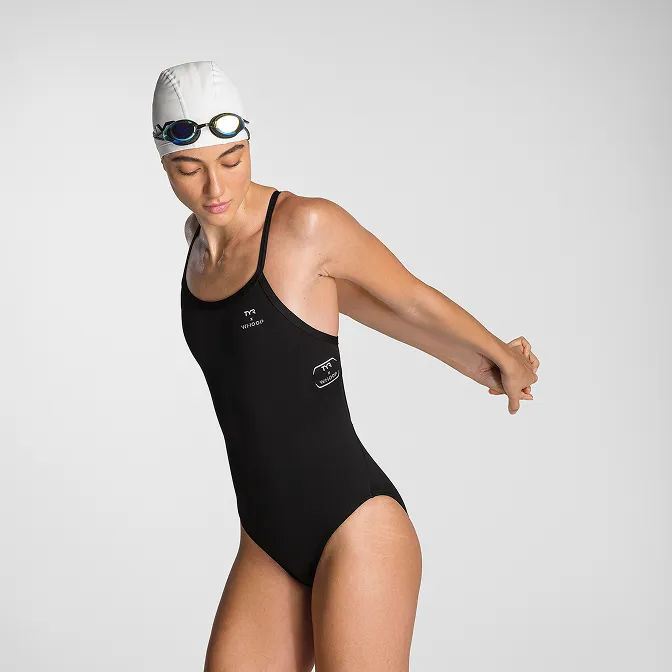
Product A
SQUARE SHOT



